Cauleen Smith
Mutualities
17 Feb 2020 - 31 Jan 2021
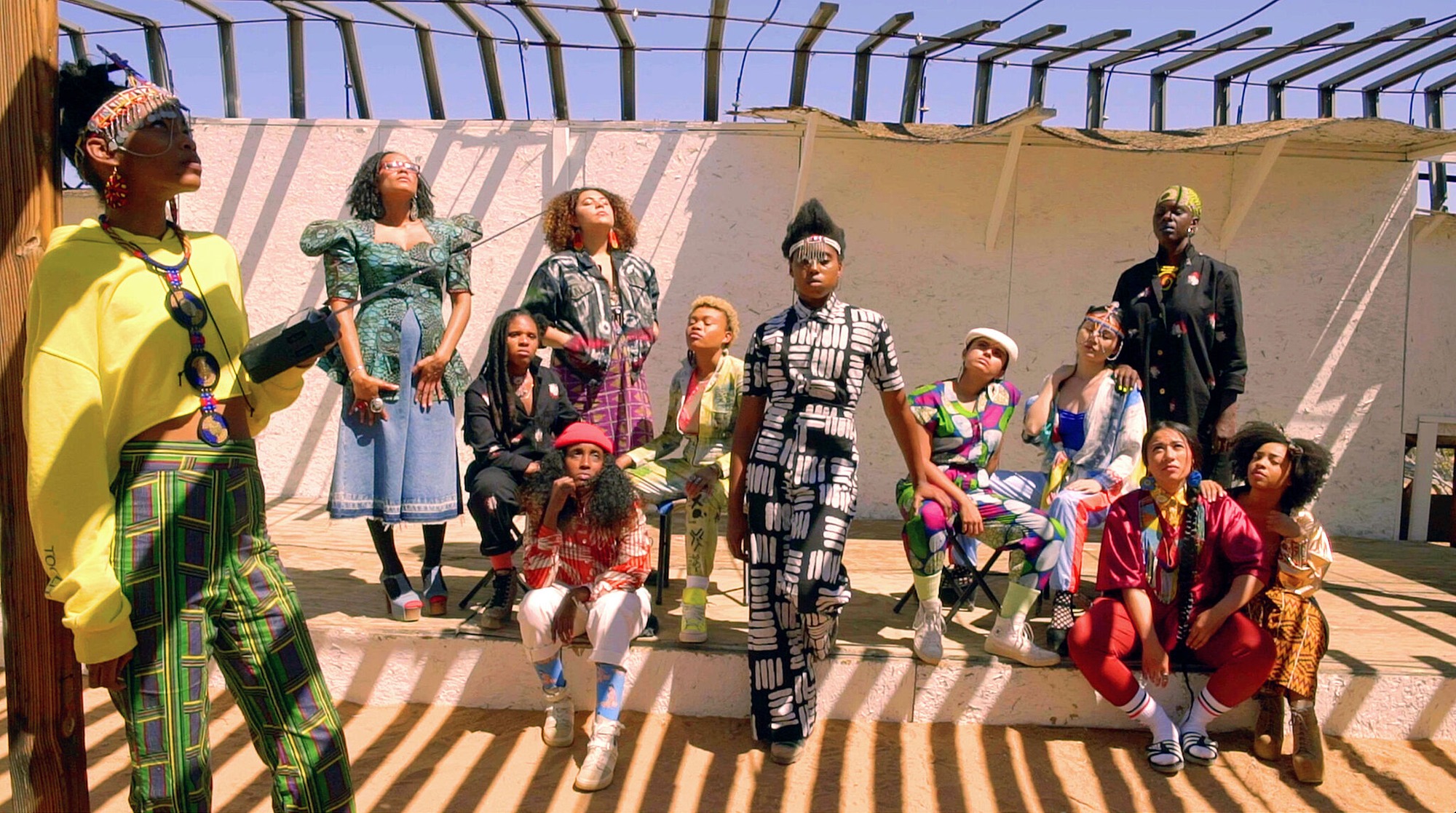
Cauleen Smith, still from Sojourner, 2018. Video, color, sound, 22:41 min. Courtesy the artist, Corbett vs. Dempsey, Chicago, and Kate Werble Gallery, New York

Cauleen Smith, still from Sojourner, 2018. Video, color, sound; 22:41 min. Courtesy the artist; Corbett vs. Dempsey, Chicago; and Kate Werble Gallery, New York
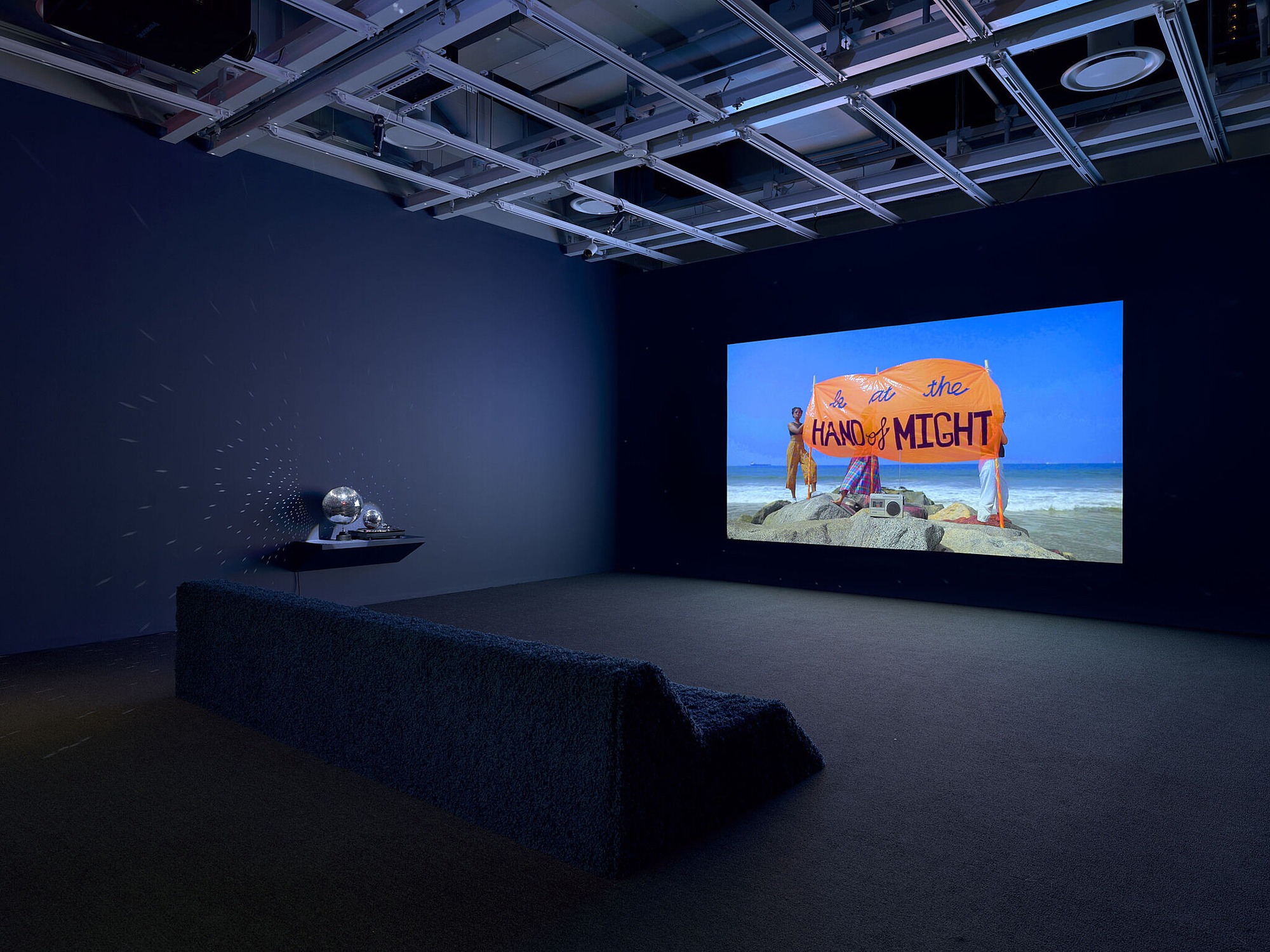
Installation view of Cauleen Smith: Mutualities (Whitney Museum of American Art, New York, February 17–May 17, 2020). From left to right: Space Station: Charmed and Strange, 2019; Sojourner, 2018. Photograph by Ron Amstutz

Installation view of Cauleen Smith: Mutualities (Whitney Museum of American Art, New York, February 17–May 17, 2020). From left to right: Pilgrim, 2017; Halimufack (chasing after Zora), 2019. Photograph by Ron Amstutz
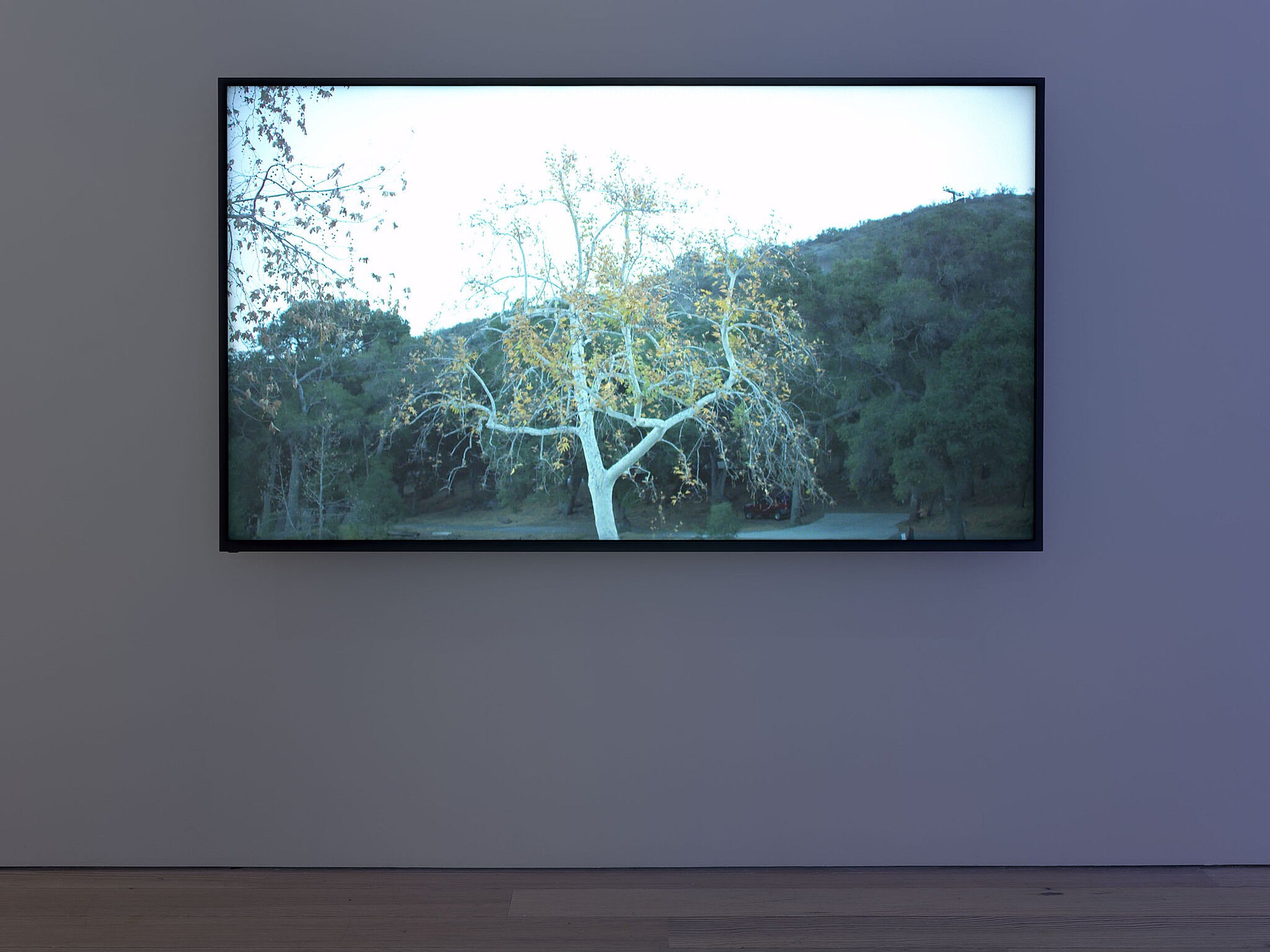
Installation view of Cauleen Smith: Mutualities (Whitney Museum of American Art, New York, February 17–May 17, 2020). Pilgrim, 2017. Photograph by Ron Amstutz
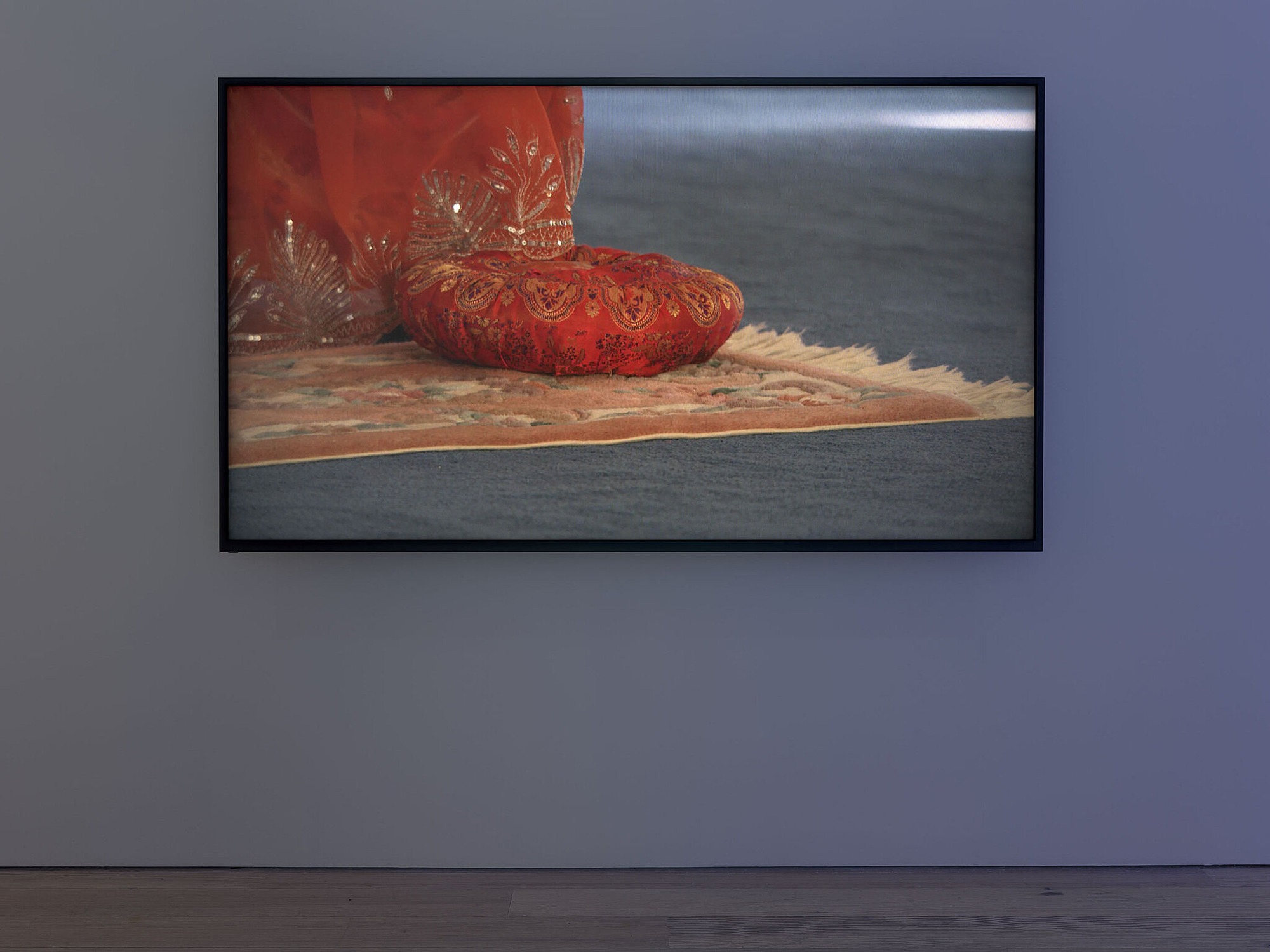
Installation view of Cauleen Smith: Mutualities (Whitney Museum of American Art, New York, February 17–May 17, 2020). Pilgrim, 2017. Photograph by Ron Amstutz

Cauleen Smith, still from Pilgrim, 2017. Video, color, sound; 7:41 min. Whitney Museum of American Art; purchase, with funds from the Film and Video Committee
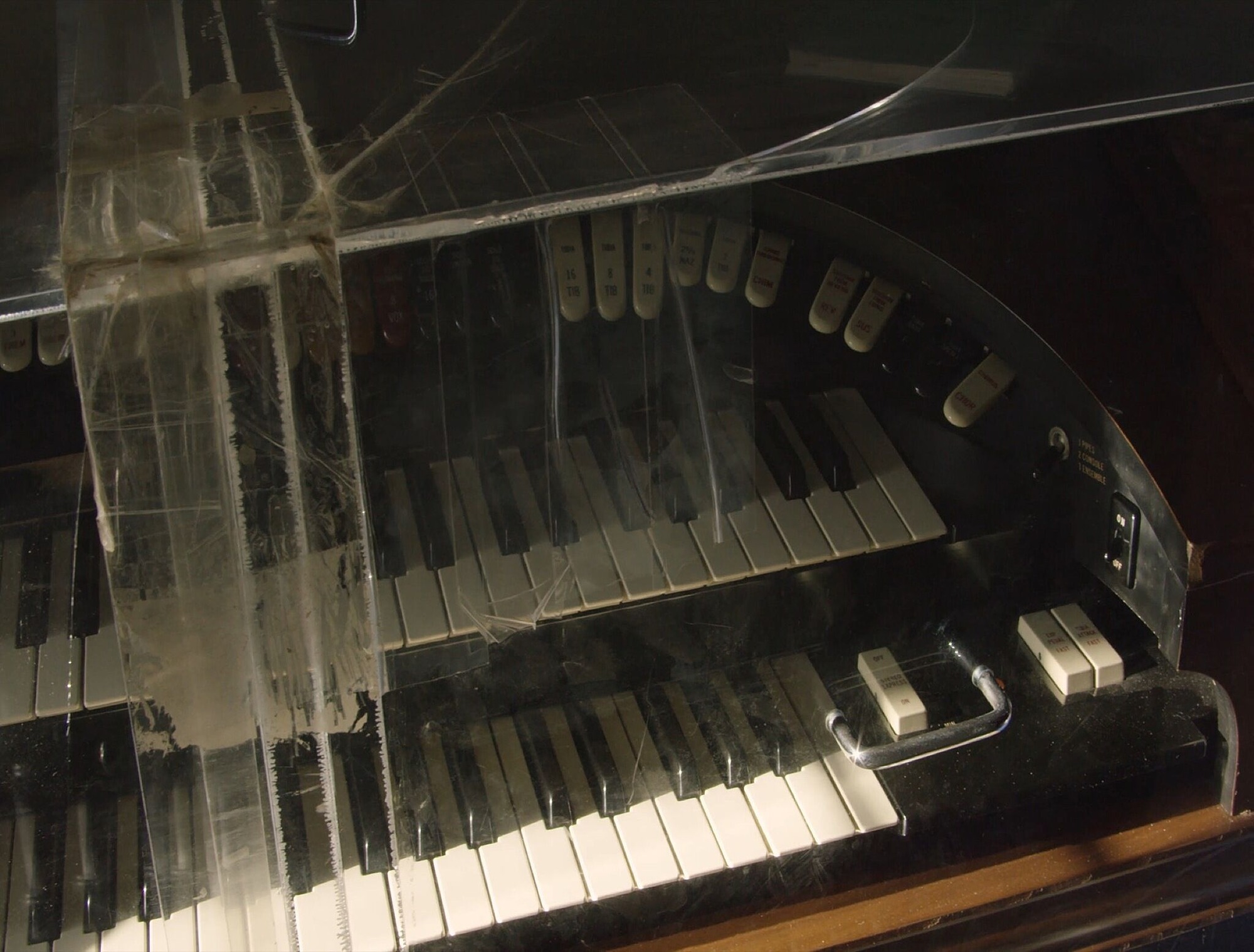
Cauleen Smith, still from Pilgrim, 2017. Video, color, sound; 7:41 min. Whitney Museum of American Art; purchase, with funds from the Film and Video Committee
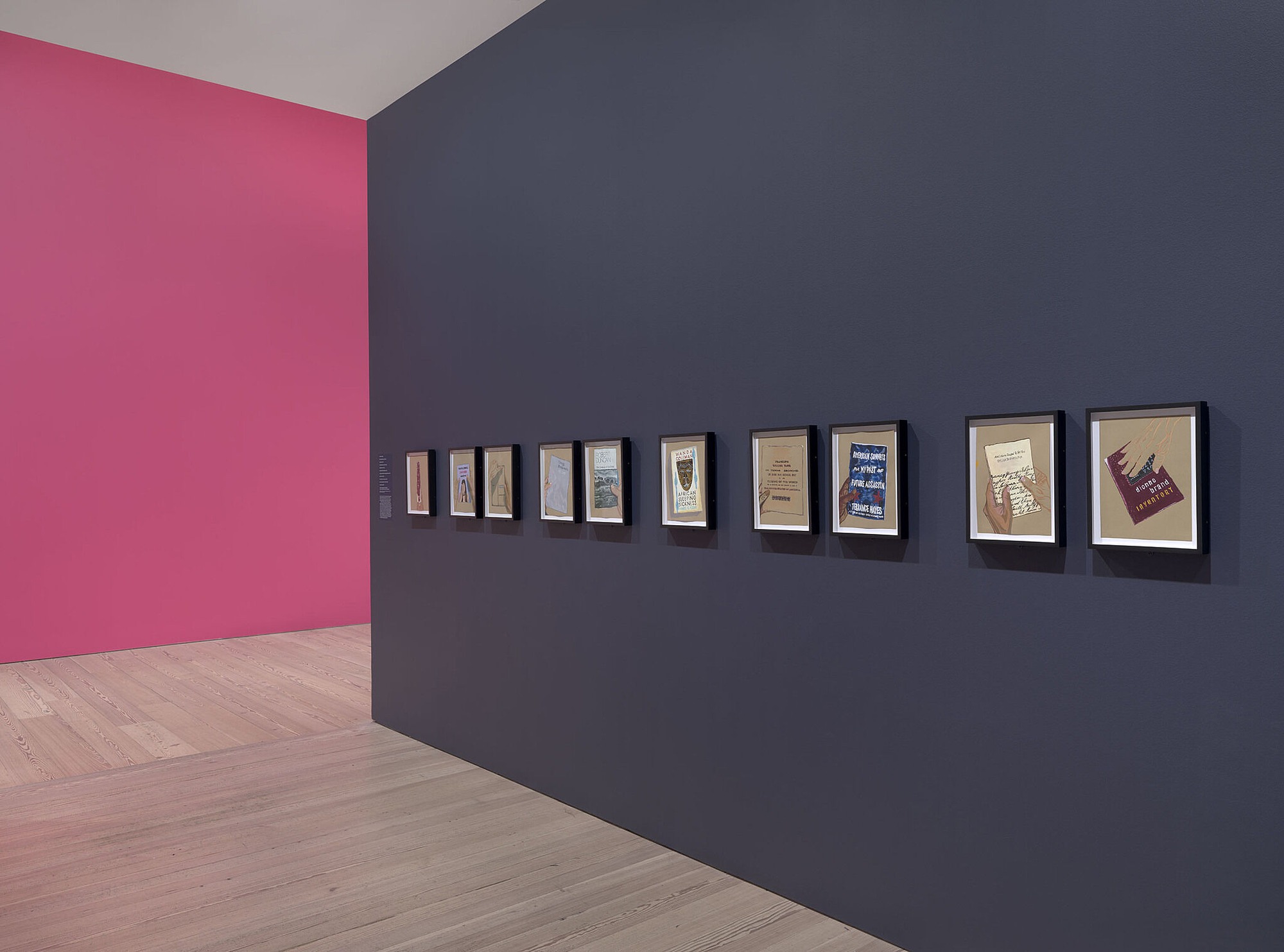
Installation view of Cauleen Smith: Mutualities (Whitney Museum of American Art, New York, February 17–May 17, 2020). From left to right: Alexis Holds Audre Lorde, 2020; Natalie Diaz, 2020; Natalie Holds Dionne Brand, 2020; Gregg Bordowitz, 2020; Gregg Holds Robert, 2020; Latasha Gave Me African Sleeping Sickness, 2020; Krista Franklin, 2020; Krista Holds Terrance, 2020; Dionne Holds Sylvia D. Hamilton, 2020; Dionne Brand, 2020. Photograph by Ron Amstutz
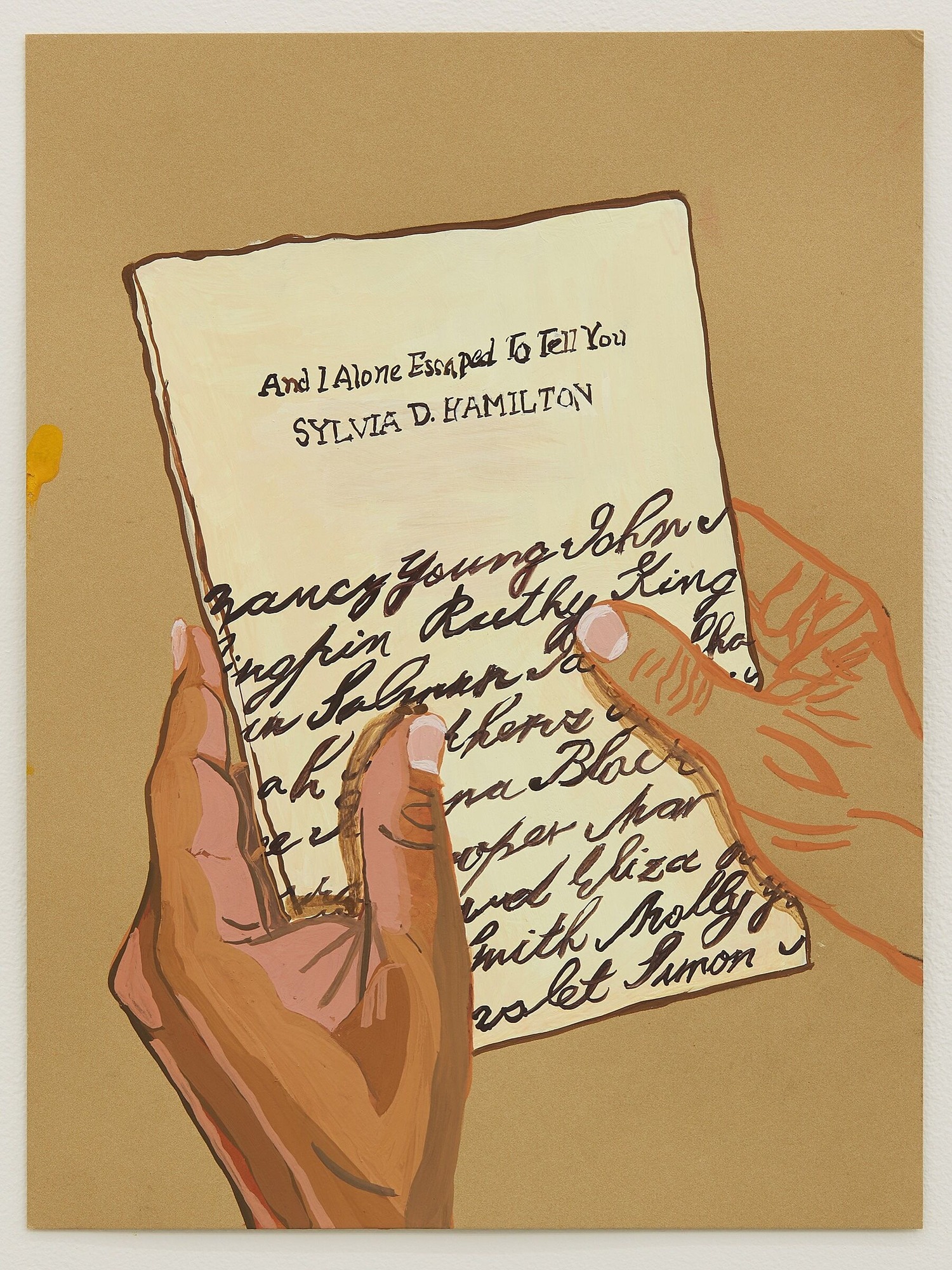
Cauleen Smith, Dionne Holds Sylvia D. Hamilton, 2020, from the ongoing series Firespitters. Gouache, graphite, and acrylic ink on paper, 12 × 9 in. (30.48 × 22.68 cm). Collection of the artist. Courtesy the artist; Corbett vs. Dempsey, Chicago; and Kate Werble Gallery, New York. Photograph by Matthew Sherman
Cauleen Smith (b. 1967) draws on experimental film, non-Western cosmologies, poetry, and science fiction to create works that reflect on memory and Afro-diasporic histories. Mutualities, the artist’s first solo show in New York, presents two of Smith’s films, Sojourner and Pilgrim—each in a newly created installation environment—along with a new group of drawings collectively titled Firespitters.
The films unfold across several important sites in Black spiritual and cultural history, weaving together writings by women from different eras, including Shaker visionary Rebecca Cox Jackson, abolitionist Sojourner Truth, the 1970s Black feminist organization Combahee River Collective, and experimental jazz composer and spiritual leader Alice Coltrane, whose music also forms the soundtrack for both films. Smith’s poetic use of the camera and light draws the viewer into a welcoming and accepting space that reveals the many ways in which invention and generosity can be resources for transformation and regeneration.
Cauleen Smith: Mutualities is organized by Chrissie Iles, Anne & Joel Ehrenkranz Curator, with Clemence White, senior curatorial assistant.
Artworks:
Pilgrim, 2017
This film traces the artist’s pilgrimage to three sites: Alice Coltrane’s Turiyasangitananda Vedantic Center in Agoura, California; Watts Towers in Los Angeles; and the Black spiritual activist Rebecca Cox Jackson’s Watervliet Shaker community in upstate New York. In vivid evocations of each place’s creative atmosphere, Smith’s camera slowly explores the ashram’s interior and Coltrane’s musical instruments, while her use of 16mm film—with its soft grain and subtle color palette—infuses Watts Towers and the Shaker garden’s flowers with an emotional intimacy.
Jackson’s advocacy of racial and gender equality, her fight against the patriarchy of organized religion, and her awareness of the African roots of her faith resonate with Coltrane’s own hybrid, transnational spiritual and musical language. Both women’s challenges to accepted authority are, like the enduring independent spirit of Watts Towers, grounded in a sense of place, community, and generosity that are also hallmarks of Smith’s own transformative work.
Sojourner, 2018
In Sojourner, a group of women walk in procession through sites including Dockweiler State Beach and Watts Towers in Los Angeles, carrying translucent orange banners—each emblazoned with part of a text by the jazz composer and spiritual leader Alice Coltrane, whose writings, along with those of Sojourner Truth, are spoken throughout the film.
Watts Towers, a cluster of seventeen sculptural spires designed and built by Italian American ironworker Simon Rodia in the Watts neighborhood of Los Angeles between 1921 and 1954, features prominently. The towers served as powerful symbols of hope and regeneration after surviving the 1965 Watts Rebellion unscathed. Smith locates a similar spirit in assemblage artist Noah Purifoy’s Outdoor Desert Art Museum in Joshua Tree, California, where the women end their procession and listen to a reading of the Black feminist Combahee River Collective manifesto.
These collective voices, echoed in contemporary footage of the Chicago-based activist coalition R3 (Resist. Reimagine. Rebuild.), fuse spirituality and activism into a potent articulation of self-realization and resistance.
Firespitters, 2020
Across her body of work, Smith foregrounds artists and thinkers who influence her practice, creating a communal exchange of ideas that reflects her discursive method of working. For her new series of drawings, Firespitters, Smith invited a group of poets to send her two photographs: one in which they hold their own books, and one in which they hold the book of another poet whose work is meaningful to them.
In the drawings, she illustrates both the book covers and the hands of the poets who selected them, reflecting the embodied labor of literary production. The authors’ selections also encapsulate the notion of mutuality that is at the crux of this exhibition. For example, poet Dionne Brand is the author of The Blue Clerk, which is the selection of another invited poet, Natalie Diaz.
Reading List
Building upon the scholarly study that underlies her practice, Smith has selected six books for visitors to read within the exhibition. Three of their covers are depicted in her Firespitters series, while the other three are from her series BLK FMNNST Loaner Library, 1989–2019.
For BLK FMNNST Loaner Library, 1989–2019, Smith created thirty-eight drawings of books whose subjects include science fiction, Black resistance, cinematography, and Indigenous teachings. Although the drawings from this series are not currently on view, the Whitney’s Frances Mulhall Achilles Library and Special Collections has assembled the full collection of books, which can be accessed in the Museum’s library.
The films unfold across several important sites in Black spiritual and cultural history, weaving together writings by women from different eras, including Shaker visionary Rebecca Cox Jackson, abolitionist Sojourner Truth, the 1970s Black feminist organization Combahee River Collective, and experimental jazz composer and spiritual leader Alice Coltrane, whose music also forms the soundtrack for both films. Smith’s poetic use of the camera and light draws the viewer into a welcoming and accepting space that reveals the many ways in which invention and generosity can be resources for transformation and regeneration.
Cauleen Smith: Mutualities is organized by Chrissie Iles, Anne & Joel Ehrenkranz Curator, with Clemence White, senior curatorial assistant.
Artworks:
Pilgrim, 2017
This film traces the artist’s pilgrimage to three sites: Alice Coltrane’s Turiyasangitananda Vedantic Center in Agoura, California; Watts Towers in Los Angeles; and the Black spiritual activist Rebecca Cox Jackson’s Watervliet Shaker community in upstate New York. In vivid evocations of each place’s creative atmosphere, Smith’s camera slowly explores the ashram’s interior and Coltrane’s musical instruments, while her use of 16mm film—with its soft grain and subtle color palette—infuses Watts Towers and the Shaker garden’s flowers with an emotional intimacy.
Jackson’s advocacy of racial and gender equality, her fight against the patriarchy of organized religion, and her awareness of the African roots of her faith resonate with Coltrane’s own hybrid, transnational spiritual and musical language. Both women’s challenges to accepted authority are, like the enduring independent spirit of Watts Towers, grounded in a sense of place, community, and generosity that are also hallmarks of Smith’s own transformative work.
Sojourner, 2018
In Sojourner, a group of women walk in procession through sites including Dockweiler State Beach and Watts Towers in Los Angeles, carrying translucent orange banners—each emblazoned with part of a text by the jazz composer and spiritual leader Alice Coltrane, whose writings, along with those of Sojourner Truth, are spoken throughout the film.
Watts Towers, a cluster of seventeen sculptural spires designed and built by Italian American ironworker Simon Rodia in the Watts neighborhood of Los Angeles between 1921 and 1954, features prominently. The towers served as powerful symbols of hope and regeneration after surviving the 1965 Watts Rebellion unscathed. Smith locates a similar spirit in assemblage artist Noah Purifoy’s Outdoor Desert Art Museum in Joshua Tree, California, where the women end their procession and listen to a reading of the Black feminist Combahee River Collective manifesto.
These collective voices, echoed in contemporary footage of the Chicago-based activist coalition R3 (Resist. Reimagine. Rebuild.), fuse spirituality and activism into a potent articulation of self-realization and resistance.
Firespitters, 2020
Across her body of work, Smith foregrounds artists and thinkers who influence her practice, creating a communal exchange of ideas that reflects her discursive method of working. For her new series of drawings, Firespitters, Smith invited a group of poets to send her two photographs: one in which they hold their own books, and one in which they hold the book of another poet whose work is meaningful to them.
In the drawings, she illustrates both the book covers and the hands of the poets who selected them, reflecting the embodied labor of literary production. The authors’ selections also encapsulate the notion of mutuality that is at the crux of this exhibition. For example, poet Dionne Brand is the author of The Blue Clerk, which is the selection of another invited poet, Natalie Diaz.
Reading List
Building upon the scholarly study that underlies her practice, Smith has selected six books for visitors to read within the exhibition. Three of their covers are depicted in her Firespitters series, while the other three are from her series BLK FMNNST Loaner Library, 1989–2019.
For BLK FMNNST Loaner Library, 1989–2019, Smith created thirty-eight drawings of books whose subjects include science fiction, Black resistance, cinematography, and Indigenous teachings. Although the drawings from this series are not currently on view, the Whitney’s Frances Mulhall Achilles Library and Special Collections has assembled the full collection of books, which can be accessed in the Museum’s library.
